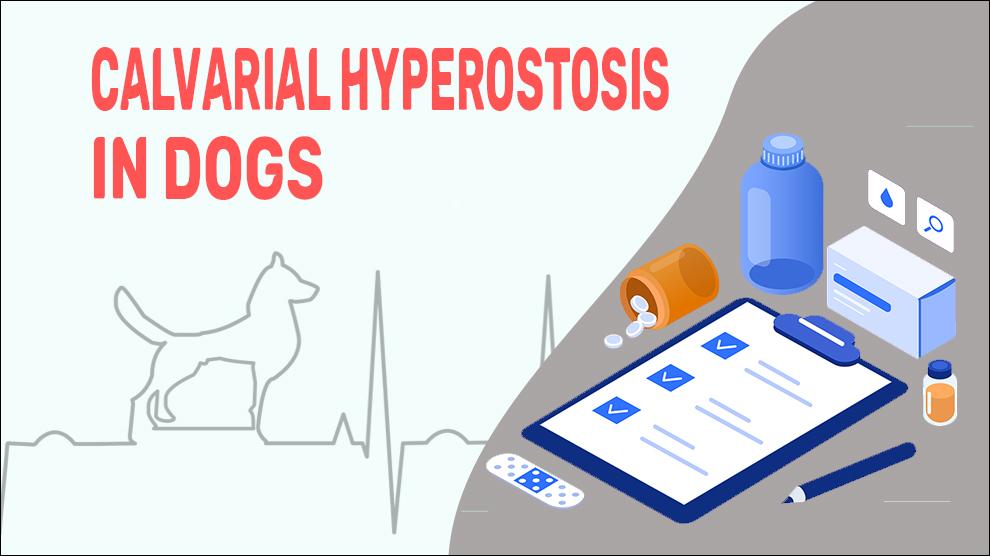What Is Calvarial Hyperostosis In Dogs?
Calvarial hyperostosis syndrome (CHS) is an uncommon, non-inflammatory, benign, progressive bone disease of the flat bones of the skull. This is earlier called idiopathic calvarial hyperostosis and it is characterized by the swelling of the skull.
CHS clinical signs are similar to craniomandibular osteopathy (lion jaw) and human infantile cortical hyperostosis (Caffey disease), however, the differential diagnosis is done by its proliferative nature and unusual asymmetric skull bone manifestation.
Until recently, this disease is reported only in male bullmastiff dogs and its etiology is still unknown. Lately, some lesions have been reported in Weimaraner and English springer spaniel dogs.
The good news is the lesions of CHS are painful at the onset, but with skeletal maturity, they will be self-limiting. Therefore, treatment is aimed at relieving pain.
Symptoms Of Calvarial Hyperostosis In Dogs
- Painful Swelling Of Skull Bones
- Fever And Fatigue
- Lymphadenopathy
- Eosinophilia
- Seizures
- Headache
- Hydrocephalus
- Osteomyelitis
- Lameness
Treatment Options For Calvarial Hyperostosis In Dogs
In the majority of dogs, treatment is not needed. However, as the skull is involved, it is better to get the suggestion of a veterinary orthopedic.
When your dog is in pain, your vet may carry out a diagnosis to look for any other problems and they may prescribe NSAIDs to help with the pain.
Supportive therapies may be suggested, for example, food supplements can be helpful.
Home Remedies For Calvarial Hyperostosis In Dogs
Even if your dog has a headache, or his skull has asymmetric swellings, a trip to the vet may not be necessary.
Head to the vet only if the swelling gets worse (your bullmastiff is beginning to look like a shar pei).
Discuss with a veterinarian any home care specific to your dog's situation.
Prevention Of Calvarial Hyperostosis In Dogs
Unfortunately, there is no way to prevent CHS and the only way available is ensuring your pup eats a healthy diet, which will also reduce the risk of many canine illnesses and diseases.
Because some of the canine lesions are hereditary, there's not much a pet parent can do to prevent them, but a high-quality diet with antioxidant supplements may help in one way or another.
Consult with a veterinary orthopedic to know what is the proper diet for your dog's bones and its overall health.
Affected Dog Breeds Of Calvarial Hyperostosis
Bull Mastiff, Male Dogs
Additional Facts For Calvarial Hyperostosis In Dogs
The asymmetrical, periosteal proliferation of the flat bones of the skull in all young dogs can be considered CHS, in that case, it is said to be more prevalent among different breeds than just Bullmastiffs.
The location of the CHS lesion is of great significance for the differential diagnosis.
CHS does not seem to affect the medullary cavity.
The lesion is focal, localized (sub) periodically, unilateral and there is no involvement of the mandible.
When To See A Vet For Calvarial Hyperostosis In Dogs?
Calvarial hyperostosis is a condition that is not improved by conservative treatment. So treatment is rarely recommended.
Food Suggestions For Calvarial Hyperostosis In Dogs
What to feed?
- Look for lean cuts as it is easier to digest.
- Pack the diet with easy-to-digest fatty proteins like lamb, chicken, turkey, fish, and eggs.
- Brown rice, lukewarm (never hot) chicken soup with Low sodium or chicken breast, and cooked vegetables are perfect for the ailing pup.
- Organ meats(liver), poultry, pork, and fish should be thoroughly cooked to kill any germs.
- Meat-flavored baby food or semi-moist pet food with boiled chicken.
Lean meats to incorporate into the diet:
- Ground meat- labeled 90 percent lean or leaner(beef, chicken, turkey).
- “Loin” or “round” cuts of beef or pork (top round, top loin, top sirloin, bottom round steak, pork tenderloin).
- Leg of lamb, Shank half (lean part only).
- Lamb from leg or shoulder (cubed for kabob or stew).
- Chicken thigh meat (skinless), breast (skinless), and white meat (skinless).
- Turkey light meat (skinless), thigh (skinless), breast (skinless).
Top foods:
- Leafy greens (Spinach, Kale, lettuce).
- Poultry like chicken and turkey.
- Turmeric, Red Bell Peppers.
- Broth or stock of boiled chicken bones.
- Tuna, salmon, cod, whiting, whitefish, trout, mackerel, sardines, and herring.
- Cooked or raw liver, Red
- Plant-based proteins peas, chickpeas, and lentils.
- Canned pumpkin, Carrots.
- Berries, apples, banana.
Conclusion
Although the condition is usually self-limiting and benign, it is always good to get the opinion of a veterinary neurologist. There are no reported behavioral or neurological problems.
Dogs are like toddlers. Dogs with CHS mean they are still toddlers who have a lump in their heads.

















